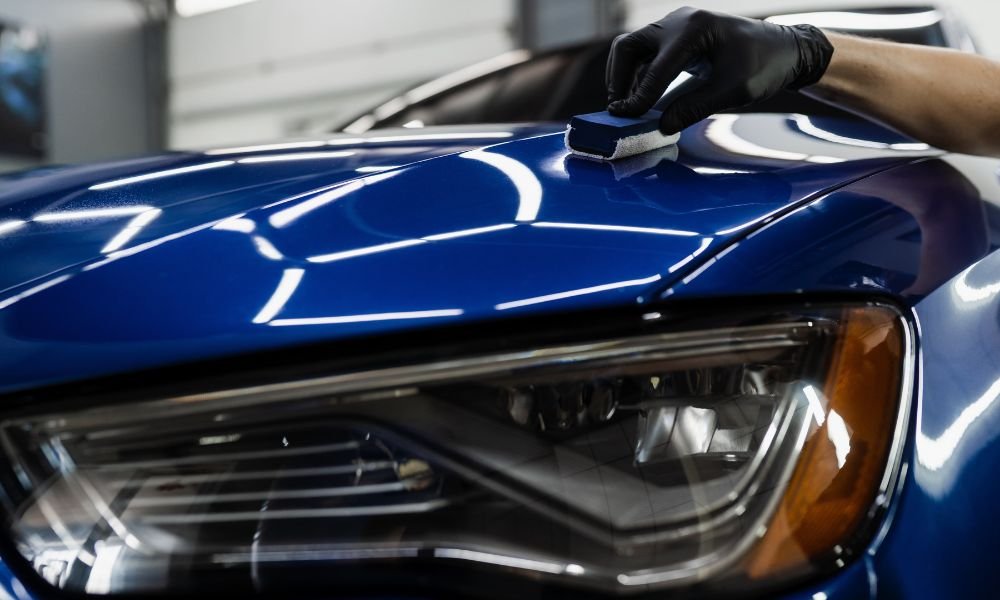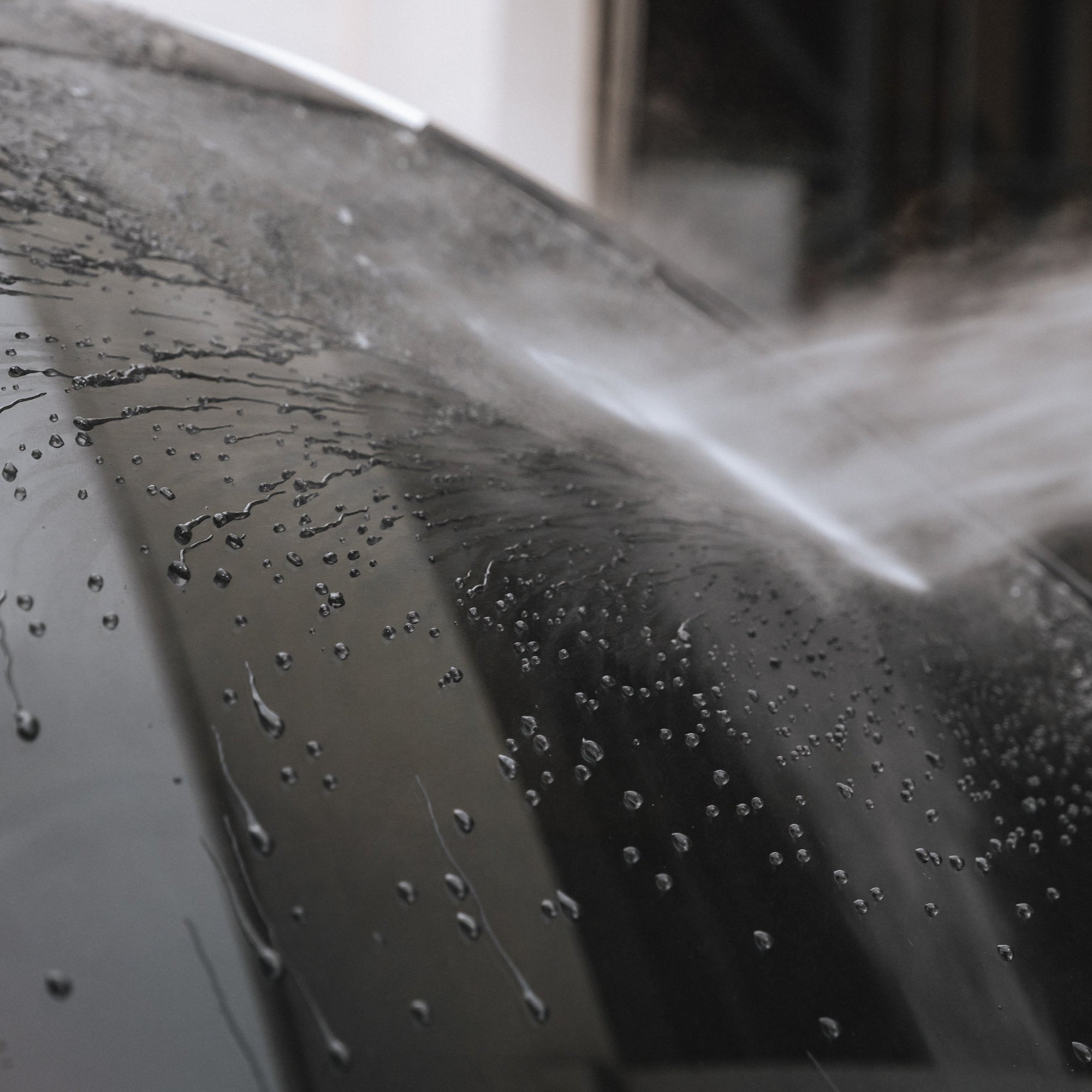Ceramic Coating vs. Sealants: Recognizing the Differences for Your Vehicle
Ceramic Coating vs. Sealants: Recognizing the Differences for Your Vehicle
Blog Article
The Relevance of Ceramic Coating: Securing Your Auto's Exterior With Precision
In a period where maintaining the useful and aesthetic stability of your vehicle is vital, ceramic layer emerges as a critical remedy. With its unique bonding residential or commercial properties, ceramic finish offers a level of protection that much goes beyond traditional waxing techniques.
Advantages of Ceramic Coating
When it comes to preserving a vehicle's aesthetic allure, ceramic covering offers considerable benefits. By forming a semi-permanent bond with the vehicle's paint, ceramic coatings properly stop oxidation and fading, ensuring that the vehicle keeps a shiny, showroom-like finish for an extended duration.
In enhancement to its safety high qualities, ceramic covering supplies exceptional hydrophobic properties, causing water and other liquids to grain off effortlessly. This feature streamlines the cleaning procedure, as dust and particles are much less likely to abide by the surface area, decreasing the frequency and effort needed for maintenance. Furthermore, the finish's resistance to chemical spots from acidic contaminants like bird droppings and tree sap is one more noteworthy benefit, decreasing prospective paint damages.
Ceramic coatings likewise improve scrape resistance, supplying a layer that can take in small abrasions and swirl marks. This characteristic is particularly valuable in maintaining a beautiful surface area, reducing the probability of noticeable blemishes and preserving the stability of the car's paintwork with time.

How Ceramic Covering Works
Understanding the auto mechanics behind ceramic finishing exposes its efficacy as a protective remedy for automobiles. Ceramic finishes are basically fluid polymer applications that chemically bond with an automobile's factory paint, producing a safety layer. This layer functions as an obstacle against environmental contaminants such as grime, dust, and ultraviolet rays, which can deteriorate a vehicle's outside over time. The essential element in ceramic finishing is silicon dioxide (SiO2), which originates from quartz crystals and is known for its phenomenal solidity and durability.
Application of ceramic finishing involves a careful process. This shield enhances the automobile's gloss and hydrophobic homes, facilitating much easier cleansing by triggering water and impurities to bead and slide off easily.
Furthermore, the finishing's molecular framework offers resistance to small scrapes and chemical discolorations. Unlike waxes or sealers that sit on top of the paint, ceramic finishings incorporate with the surface, using durable protection. This combination is basic to its effectiveness, guaranteeing the car's coating remains beautiful for several years.
Contrasting Ceramic Coating to Alternatives
In the world of auto defense, ceramic coating stands as a formidable option when compared to traditional options such as waxes and sealants. While waxes provide a short-term shiny finish, typically lasting just a couple of weeks to months, ceramic coverings give a longer-lasting remedy, commonly sustaining for several years. This durability is attributed to the chemical bonding that occurs when ceramic coverings are used, developing a solid layer that is resistant to environmental threats.
Contrastingly, sealers, although even more durable than waxes, still disappoint the durable security provided by ceramic finishings. Sealants can generally last find more for approximately a year, giving a synthetic shield versus specific aspects. They lack the premium hydrophobic residential properties and UV protection that ceramic coatings provide.
Additionally, ceramic layers offer enhanced scrape resistance, which neither waxes neither sealers can properly match. In summary, while standard waxes and sealants provide basic protection, ceramic coatings present a thorough, long-lasting solution that dramatically protects the vehicle and enhances's exterior surface.
Application Process Clarified
Applying ceramic layer to a lorry needs a careful process to ensure optimum outcomes and toughness. When cleaned, the lorry is dried out and polished to remove any imperfections, as any kind of existing swirls or scratches can end up being much more obvious after the finish is used.
Following surface area preparation, the application of the ceramic layer begins. The coating is generally used in a climate-controlled atmosphere to stop dust particles from clearing up on the freshly cleaned up surface area. Utilizing an applicator pad, the ceramic finishing is applied in small Find Out More areas to make sure even insurance coverage. It is necessary to adhere to the producer's standards concerning the ideal treating time and application density.
After application, the finishing requires a certain curing period, during which the automobile must be secured from water and contaminants. This treating procedure can differ relying on the product but typically varies from 24 to 48 hours. Ultimately, this comprehensive procedure is crucial in attaining a resilient and glossy coating.
Upkeep Tips for Longevity
To keep the durability of a ceramic finishing, adherence to a regimented maintenance routine is crucial. Stay clear of automated automobile washes, as their harsh brushes can compromise the covering's integrity.
Post-wash, drying out the lorry with a clean microfiber towel avoids water spots that may deteriorate the coating over time. In addition, apply a ceramic covering booster every couple of months. These boosters enhance the hydrophobic homes and boost the finish's protective abilities, ensuring it remains reliable against pollutants.
Keep in mind that vehicle parking locations play a crucial function in upkeep. ceramic coating. Whenever feasible, park in shaded locations to reduce UV direct exposure, which can slowly damage the finishing. For long-lasting storage space, think about using a vehicle cover for added protection against ecological aspects
Verdict
In final thought, ceramic coating works as a vital protective layer for automobile outsides, offering resilient protection versus environmental variables such as uv, dust, and gunk rays. By forming a semi-permanent bond with the paint, it boosts visual appeal while maintaining the automobile's worth. Its hydrophobic buildings facilitate much easier upkeep, differentiating it from different safety methods. Understanding the application process and sticking to upkeep recommendations are crucial for making best use of the longevity and effectiveness of ceramic finishing.
When it comes to preserving an automobile's aesthetic appeal, ceramic covering provides significant advantages. By creating a semi-permanent bond with the lorry's paint, ceramic layers click here to read successfully stop oxidation and fading, making sure that the cars and truck keeps a glossy, showroom-like surface for an extensive period. Ceramic finishings are basically fluid polymer applications that chemically bond with a vehicle's manufacturing facility paint, producing a safety layer. In summary, while typical waxes and sealants supply fundamental security, ceramic finishes provide a thorough, lasting service that significantly boosts and protects the vehicle's outside coating.

Report this page